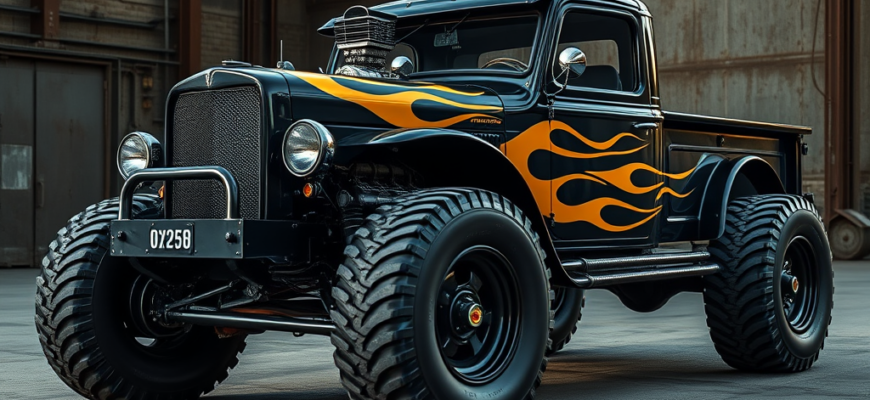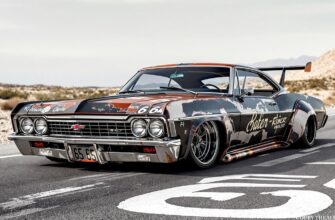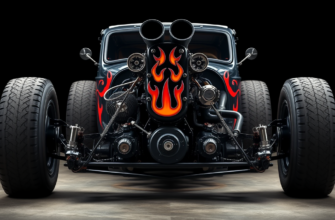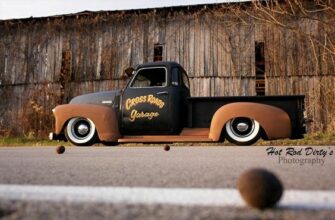- Introduction
- History and Development of Rat Rod Trucks
- Benefits of Owning a Rat Rod Truck
- Unique Style and Character
- Affordability
- Performance Upgrades
- Community and Camaraderie
- Potential Drawbacks and Risks
- Legal Considerations
- Safety Concerns
- Limited Practicality
- How to Build a Rat Rod Truck
- Step 1: Choose Your Base Vehicle
- Step 2: Plan Your Design
- Step 3: Gather Materials and Tools
- Step 4: Disassemble and Modify
- Step 5: Install Engine and Drivetrain
- Step 6: Suspension and Brakes
- Step 7: Bodywork and Paint
- Step 8: Interior and Finishing Touches
- Step 9: Testing and Tuning
- Tips for Building a Successful Rat Rod Truck
- Embrace Imperfection
- Prioritize Safety
- Seek Expert Advice
- Document Your Progress
- Conclusion
Introduction
Rat rod trucks have become increasingly popular in the automotive world, capturing the attention of enthusiasts and collectors alike. These unique vehicles are characterized by their rugged appearance, custom modifications, and often unconventional design elements. In this article, we will delve into what rat rod trucks are, explore their history and development, discuss their benefits and potential drawbacks, provide guidance on how to build one, offer some useful tips, and conclude with a summary of the main advantages and recommendations.
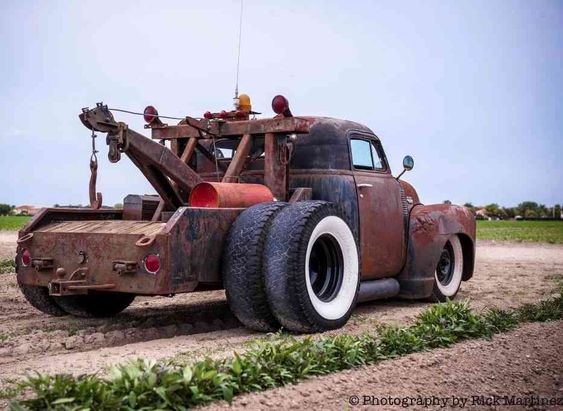
History and Development of Rat Rod Trucks
The concept of rat rods can be traced back to the early days of hot rodding in the United States during the mid-20th century. Hot rodders were known for taking old cars and modifying them to improve performance and create a distinctive look. Over time, this evolved into the creation of rat rods, which emphasized a more raw and unfinished aesthetic.
Rat rod trucks emerged as a subculture within the larger hot rod movement. They are typically built using older truck chassis and bodies, often from the 1930s to the 1950s. The term “rat rod” comes from the idea that these vehicles are intentionally left looking rough or unfinished, much like a ratty old car found in a barn. This deliberate choice to maintain an imperfect appearance is part of their charm and appeal.
Benefits of Owning a Rat Rod Truck
Unique Style and Character
One of the primary benefits of owning a rat rod truck is its unique style and character. Each rat rod is a one-of-a-kind creation, reflecting the builder’s personality and creativity. The combination of vintage parts, custom fabrication, and artistic touches makes each vehicle stand out from the crowd.
Affordability
Compared to classic cars or high-end custom builds, rat rod trucks are often more affordable to build and maintain. Many builders use salvaged parts and materials, keeping costs down while still achieving impressive results. This affordability makes rat rods accessible to a wider range of enthusiasts.
Performance Upgrades
While rat rods may appear rough around the edges, they often boast significant performance upgrades under the hood. Builders frequently install modern engines, suspension systems, and brakes, enhancing the driving experience without sacrificing the vehicle’s vintage charm.
Community and Camaraderie
Owning a rat rod truck provides access to a vibrant community of fellow enthusiasts. Car shows, meetups, and online forums offer opportunities to share knowledge, exchange ideas, and celebrate the love of these unique vehicles. The camaraderie among rat rod owners fosters a sense of belonging and shared passion.
Potential Drawbacks and Risks
Legal Considerations
One of the challenges of owning a rat rod truck is navigating legal requirements. Depending on the jurisdiction, there may be regulations regarding safety inspections, emissions standards, and registration. Ensuring compliance with local laws is crucial to avoid fines and penalties.
Safety Concerns
Due to their modified nature, rat rod trucks may not always meet modern safety standards. It is essential to prioritize safety when building or purchasing a rat rod, ensuring that critical components such as brakes, steering, and lighting are up to par. Regular maintenance and inspections are vital to address any potential issues promptly.
Limited Practicality
Rat rod trucks are primarily designed for show and personal enjoyment rather than daily driving. Their unique aesthetics and modifications may make them less practical for everyday use. Owners should consider their intended purpose before investing in a rat rod project.
How to Build a Rat Rod Truck
Building a rat rod truck is a rewarding but complex process that requires careful planning and execution. Here are some steps to guide you through the journey:
Step 1: Choose Your Base Vehicle
Select an older truck chassis and body as your starting point. Popular choices include Ford Model A, Chevrolet 3100, and Dodge Power Wagon. Ensure the chosen vehicle has a solid frame and minimal rust damage.
Step 2: Plan Your Design
Create a detailed plan outlining your vision for the rat rod. Consider factors such as engine type, suspension setup, paint scheme, and interior design. Sketching your ideas can help bring your vision to life.
Step 3: Gather Materials and Tools
Source the necessary parts and tools for the build. This may include salvaged components, aftermarket parts, and specialized equipment. Networking with other rat rod enthusiasts can be invaluable in finding rare or hard-to-find items.
Step 4: Disassemble and Modify
Disassemble the base vehicle and begin making modifications according to your plan. This may involve cutting, welding, and fabricating new components. Pay close attention to structural integrity and safety throughout the process.
Step 5: Install Engine and Drivetrain
Install the chosen engine and drivetrain components. Ensure proper alignment and secure mounting. Test fit all parts to ensure compatibility and functionality.
Step 6: Suspension and Brakes
Upgrade the suspension system to improve handling and ride quality. Install modern brakes to enhance stopping power and safety. Regularly check and adjust these systems to maintain optimal performance.
Step 7: Bodywork and Paint
Complete any necessary bodywork repairs and apply your desired paint scheme. Rat rods often feature distressed or patina finishes, so embrace imperfections and add character to the exterior.
Step 8: Interior and Finishing Touches
Customize the interior to match your overall design theme. Add comfortable seating, functional gauges, and any additional features that enhance the driving experience. Attention to detail in the finishing touches can elevate the final product.
Step 9: Testing and Tuning
Thoroughly test drive the completed rat rod to identify any issues or areas for improvement. Fine-tune the engine, suspension, and brakes to achieve optimal performance and reliability.
Tips for Building a Successful Rat Rod Truck
Embrace Imperfection
Part of the charm of rat rods lies in their imperfections. Don’t strive for perfection; instead, let the natural wear and tear of the vehicle shine through. This adds authenticity and character to your build.
Prioritize Safety
Always put safety first when building or modifying a rat rod. Ensure that critical components such as brakes, steering, and lighting meet or exceed safety standards. Regular maintenance and inspections are key to keeping your vehicle safe and reliable.
Seek Expert Advice
If you’re new to the world of rat rods, seek advice from experienced builders and enthusiasts. Online forums, car clubs, and local meetups are excellent resources for learning and networking.
Document Your Progress
Keep a detailed record of your build process, including photos, receipts, and notes. This documentation can be valuable for troubleshooting, insurance purposes, and sharing your journey with others.
Conclusion
In conclusion, rat rod trucks offer a unique blend of style, performance, and affordability that appeals to a wide range of automotive enthusiasts. While they come with certain challenges and risks, the rewards of owning and building a rat rod can be immensely satisfying. By carefully planning your build, prioritizing safety, and embracing the spirit of imperfection, you can create a one-of-a-kind vehicle that reflects your personality and passion for the art of customization. Whether you’re drawn to the rugged aesthetics, the thrill of modification, or the camaraderie of the rat rod community, these vehicles continue to captivate and inspire those who appreciate the beauty in the unconventional.
(2)

